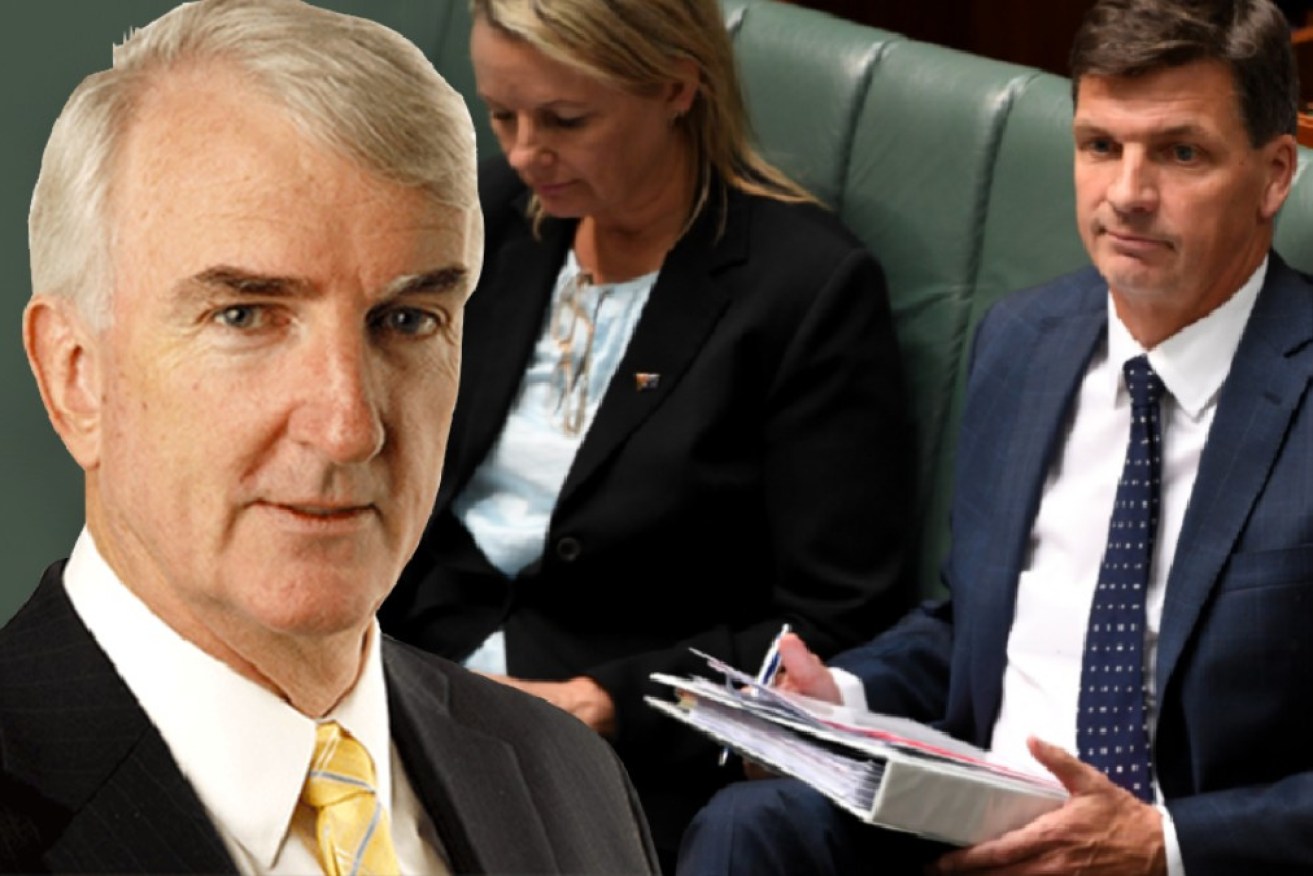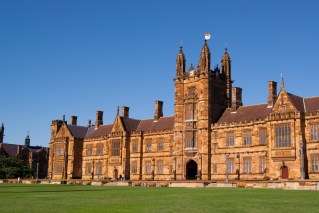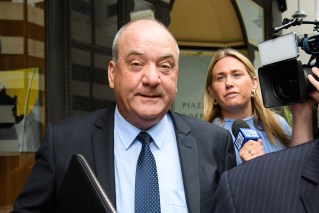Angus Taylor spotted fiddling more figures


Michael Pascoe says Angus Taylor has again been caught out fudging numbers.
The Minister for the Environment and Energy, Angus Taylor, seems to have a problem with numbers, whether it’s the Sydney City Council’s travel budget or what year Naomi Wolf was at Oxford.
His latest figure fiddling though is much bigger and more serious than either of those embarrassments.
And it’s possibly more absurd.
At the COP25 climate summit in Madrid last week, Mr Taylor was pushing the government line that Australia would meet and exceed its Paris agreement to reduce greenhouse gas emissions by 26 per cent from 2005 levels by 2030 – “in a canter”, according to Prime Minister Scott Morrison.
But all the while, Mr Taylor had a graph from his department showing the claim was, shall we politely say, “false”.
Without much fanfare, the Department of Environment and Energy earlier this month published its annual emissions projections.
At the core of the report is the accompanying graph of Australia’s emissions of millions of tonnes of CO2-equivalent from 1990 projected out to 2030.

Australia’s emissions, 1990 to 2030 Source: Department of the Environment and Energy
Blind Freddy can see the government’s forecast reduction from nearly 600Mt in 2005 to 511Mt in 2030 does not represent 26 per cent.
It’s actually less than 15 per cent.
But with Mr Taylor’s talent for figure fiddling, the sun rises in the west, bears no longer defecate in the woods, and somehow less than 15 per cent is turned into more than 26 per cent.
Because he says so.
The government attempts this particular distortion of reality by claiming “carry-over credits” from overachieving in the previous Kyoto agreement reached in 1997.
(That ‘overachievement’ was totted up primarily in LULUCF – “land use, land use change and forestry” – an area particularly prone to creative accounting as it involves such things as promising not to clear bush at some stage in the future.)
How inconvenient that the government’s graph, including buying some for LULUCF, goes back to 1990 and shows our emissions reduction from then, or from the 611Mt peak in 2006, is still less than 15 per cent.
The government’s claim is an international joke.
What’s worse is that the Madrid meeting was supposed to be about moving the needle on from the Paris agreement.
Salient nations were supposed to be able to feel the heat, smell the smoke, see the glaciers melt and therefore work to achieve more than Paris.
Instead, Mr Taylor led Australia as one of the recalcitrant countries sabotaging that reasonable aim.
And claiming black was white, or at least that coal isn’t a problem, wasn’t the Environment Minister’s only fiddle.
He also declared that Australia is backing an unprecedented wave of clean energy investment.
Well, yes – and no.
Australia is enjoying a surge in clean energy generation investment this year, but then it falls away quite rapidly, as shown in another graph, this time by the construction industry analysts at Macromonitor.
Macromonitor reckons the next clean energy investment boom doesn’t kick in until the middle of the decade when the need for storage – pumped hydro, batteries – is more acute.
Give or take a project, that seems to be factored into the government’s forecasts.
The departmental report says large amounts of utility-scale renewables enter the electricity market in the early 2020s.
“However, the continued growth in rooftop solar slows the uptake of utility scale over the long term in the projections, as large quantities of solar competes during the middle of the day,” the department says.
“The result is more limited uptake of large-scale solar beyond the mid-2020s.”
Electricity generation is our biggest single source of greenhouse gases, accounting for 34 per cent of our total CO2 emissions.
But that is set to change over the next decade.
The decarbonisation of electricity has been under way since 2016 with state renewable energy targets, the household rooftop solar surge and market forces having their way as old coal power stations prove uneconomic.
From an expected 170Mt in 2020, the government forecasts electricity generation emissions to fall to 131Mt in 2030.
The installed capacity of coal-generated electricity is forecast to fall by 28 per cent over the decade from 25GW in 2020 to 18GW in 2030.
It has been easy for the general public to focus on coal as the face of CO2 emissions, aided by the rich symbolism of Mr Morrison brandishing a lump of coal in Parliament.
However, electricity generation will no longer be our biggest emitter by 2030. The title will pass to primary industries.
In 2020, 185Mt will be emitted by the combined electricity, gas and water industries and 156Mt from primary industries. In 2030, Mr Taylor’s department forecasts electricity, gas and water will be doing 145Mt and primary industries 172Mt.
Given the importance of primary industries to the government, both for votes and donations, a cynic might wonder if the strong strain of climate denialism in the coalition is inspired by realising where the next focus will be for emission reductions if we ever get serious.
That might help explain the vehemence of the attacks on NSW Environment Minister Matt Kean last week for making some very mild remarks acknowledging that climate change is playing a role in our increased bushfire risk.
While the Murdoch climate denialist myrmidons swung into action against Mr Kean in the Daily Telegraph, at least some of the attack was attributed to anonymous coalition members.
The stupidity of the attacks overlooked the most obvious thing about Matt Kean MP – his electorate is Hornsby on Sydney’s northern fringe. As the map shows anyone who looks, most of his electorate is bush – tinder-dry, bushfire-prone bush.
Mr Kean has understandably nervous voters.
To pretend the sun rises in the west, as the federal government is doing, is not a sustainable option.

Matt Kean’s electorate of Hornsby is very bushy.
Then there is the matter of NSW’s grand plan to lead the way on reducing emissions, a plan championed by Mr Kean as Environment Minister.
It sounds, if not good, at least like an improvement.
There’s still no sensible pricing of carbon – a baseline of a credible climate policy – but there is a target of reducing NSW’s emissions by 35 per cent by 2030.
Of course, it’s yet to be seen if that’s a real target, or just a Liberal Party one.









